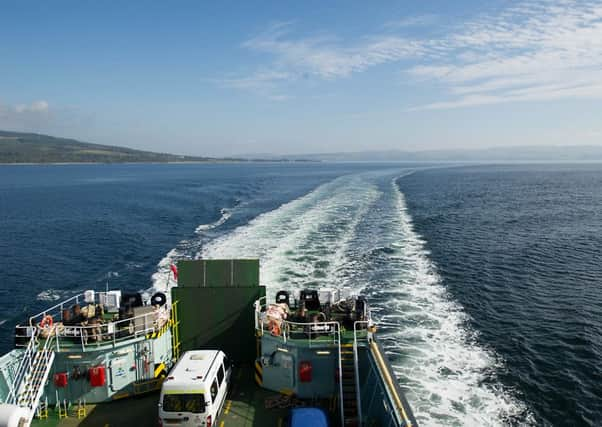Alastair Dalton: Ferry tender results could have greater significance


But this week’s final tenders for the Clyde and Hebrides ferry routes could prove far more significant than just whether publicly-owned CalMac or private rival Serco will be at the helm for the next eight years.
For the islands they serve, the “lifeline” that the service provides is increasingly what those communities need.
Advertisement
Hide AdAdvertisement
Hide AdUnlike many forms of transport in Scotland, west coast ferry traffic has been in decline over the last decade, from 5.3 million passengers in 2004 to 4.9m ten years later.
This is not because people are switching to other means of travel, as is the case with buses. There is often no other option, especially in places where there are no flights.
Instead, the drop-off in demand is because fewer islanders are travelling, or travelling less frequently.
It’s a symptom of an ageing and dwindling population, and economic decline that is in danger of being accelerated by current moves to further develop Scotland’s cities as more skills and talent are drawn to the mainland.
That’s why the next ferry contract, which is due to start in October, could prove so important. Whoever wins it, the service won’t be completely privatised because the Scottish Government’s Transport Scotland agency will continue to specify in detail how it is run.
Neither the vessels nor CalMac’s familiar red lion branding – both of which are owned by a separate state-owned firm – will change either.
However, innovatory flair is what ministers will no doubt hope the bids include, and which the islands need.
Ways must also be found to make the service more reliable. Making the operation top notch in every way will also be imperative because the cost to Scottish taxpayers of running the 26 routes ranging from Campbeltown to Stornoway has steadily increased.
Advertisement
Hide AdAdvertisement
Hide AdThe expected £1 billion subsidy price tag for this next contract will also rightly require continuing scrutiny. But extra sailings, new ferries and significant fare cuts to bring them more into line with land transport costs are among the factors involved. There appear to be pluses and minuses if either contender wins.
Serco has expressed confidence its “transport expertise and communities-based approach to service delivery” will make the quality of its bid “stand out”. The company has hit problems in several of the many government contracts it runs either side of the Border.
It has also had a fractious relationship with the unions, which has led to strikes on both the Caledonian Sleeper and CalMac itself, over uncertainty over staff conditions should it win.
However, significantly, a RMT-commissioned academic report this month concluded it hadn’t done a bad job running NorthLink, the main Northern Isles ferry service.
CalMac has made many improvements over the past few years with its catering and customer service helping to win a string of awards. It is confident that its “compelling” bid will be the “clear winner” and even goes so far as describing itself as “the only credible operator”.
CalMac also warns that if it doesn’t, that could be the end of public-sector bids for the service because there won’t be a body left to lodge one.
It could all add up to be a tough choice for whoever is transport minister after the May election.